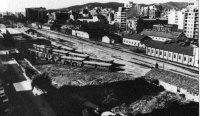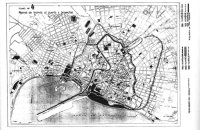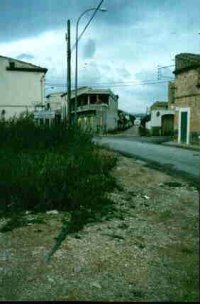Newsletter 14th April 2000
The pictures may take a while to download but have patience - they're worth waiting for !!
I have bought a copy of the book, "Recuerdo del Vapor en La Vía Estrecha Española"(Spanish Narrow Gauge Steam Remembered) by Lawrence G. Marshall. It is a hardback book concentrating mainly on the narrow-gauge railways, both passenger carrying and industrial, of the Spanish mainland but with some terrific black and white photos of the steam locos of the FCM taken by the author in 1957. There is a special offer if you'd like to buy this book, which is printed in Spain, direct from the author at a discounted price of £23 including post and packing (normal price £29) follow this link for an order form. This is a lovely book with terrific photos like those below but there are only about sixteen photos in all, together with descriptions in both English and Spanish, of the Majorcan locos but a huge selection of b/w photos of narrow gauge steam locos from the Spanish mainland, together with descriptions, histories and comments.

The second photo is of the Nasmith Wilson 4-6-0 tank loco "Marratxi", taken in the station yard at Palma, with the old roundhouse (sadly demolished long ago) in the background. This loco is from the same maker as "Algaida " in last month's newsletter - note the somewhat quirky and quite distinctive style.

The third photo is of a Nasmyth Wilson 0-6-0 tank loco at Palma. To the right of the photo one of the early railcars can just be seen, peeping out from the shed.

The final picture in this series, scanned from the flyer which L.G. Marshall sent me (much better in the book !!) but nothing whatsoever to do with Majorca. Taken in 1962, it is of the rope-hauled incline between Gijón and Noreña on the northern section of the Langreo Railway in Cantabrica. The railway at this point is double tracked and normally very busy with coal traffic. This loco has run around her passenger train at La Florida and propelled it onto the start of the incline. Between the locomotive and the coaches is a special brake van which holds the haulage cable - note the extra rails between the tracks upon which an emergency braking system could clamp, similar to the system used on the Snaefell Railway, the Mont Cenis Railway and the Rimutaka Incline in New Zealand.

Another non-Majorcan item is the long-since dismantled narrow-gauge mineral railway between Bédar and Garrucha in the Spanish province of Almeria (the hottest part of Spain which has its own desert where several very famous spaghetti-westerns were made) situated between the provinces of Granada and Murcia. Follow this link to a page of photos and a plan of the railway complex at the Garrucha (seaside) end of the line, which may be of some interest, use the "back" button on your browser to return.
Mike Kaben received an e-mail from Carlos Ortigosa Rausch which he has very kindly forwarded to me, together with his translation. (Mike's comments are in green, mine are in this colour):-
Dear Mr. Kaben,
with pleasure I studied your (German version) home page about Majorcan railways. As well I recognized the link to Mr. Emmott's reports.
I'm a great fan of all narrow gauge railways and other mountain and rack-railways especially because their operation is very limited and clear such that the functionality of operation is easy to understand. But it's not only this that raises my interest again and again. The romantic moods of lonely single-track branchlines through wild valleys and sometimes hidden stations are of special charm to me.
Another thing I like doing is to discover the remainders of former railroads and their installations. Rolling stock most often does not stay at the place where it had been used or is in a very bad condition or stands on a pedestal in front of a station (possibly in the middle of a roundabout *urgh*). On the other hand, with some skill and trained eyes, one can recognize the more or less preserved railway embankments, pits of turntables and station platforms. Unfortunately often the estates of railways are used for other purposes shortly after closing such that the imagination of a reopening is disturbed by houses, carparks and other buildings where the rails had been. So we come to my favorite occupation: Building and reconstructing railways, just in my mind.
Where can this wonderful job be done better than in Majorca ?
1. There is still the romantic train from Sóller to Palma.
2. A part of the former 240 km of track of the Ferrocarriles de Mallorca is still in use.
3. Reactivation is in progress (very pleasing). That leads to dreams.
4. Modern operation methods and the very touristic economy in the island gives hope for the future.
5. Mediterranean landscape and temperatures pamper the railway fan even if he isn't doing his hobby.
I have to congratulate you on your report. Also I liked the good photos with beautiful subjects. I was delighted by Mr. Emmott's comparison to your photos, since this way one can easily see the developments of the reconstruction resp. restructuring. I hope that this will extend to the other routes that are currently out of use. Operation in the whole island much like the Rätische Bahn could be imagined, as an employee of the Ferrocarriles told me. (Enough tourists without a car are there!)
Enclosed you'll find some pictures, some of which I shot myself. I took a few interesting pictures from P.J. Brunet Estarelles' book "La Companyia dels Ferrocarrils de Mallorca". It's the only book which I could find about this topic. There is another book from José Maria Valero [Well, you own that one, don't you?], but it's more centered on the train of Sóller.
If you should like my lines I wouldn't reject further exchange of thoughts about this (and other) subjects.
With kind regards
Carlos Ortigosa Rausch
After I had asked Carlos, if he would mind forwarding his e-mail to you, he answered:
... Of course you may forward the material to Mr. Emmott, too. I even would appreciate if you should plan to use some of the pictures for your homepage. (See below)
On my search for my photos I remembered two B/W-photos, which I unfortunately couldn't find. One picture shows a steam train with several passenger and goods cars in a 90 degrees left turn running into the junction station of Sta. Maria. The other one shows the tram of Alaró under the railway bridge of the Palma-Inca route shortly after leaving the station of Consell. I think that I saw both pictures in a book, which I unfortunately didn't find on my shelf. We look forward to the day when you find those photos, Carlos !!
It would be appreciated if you should recognise these pictures and tell me where to find them. I believe Carlos would be very grateful if anybody could suggest the name of this book, to help him find it !!
Since I'm currently scanning my railway pictures, I can promise to send more interesting pictures when they are in my computer. As soon as you can, please, Carlos !!
Hope to hear from you soon.
With kind regards
Carlos Ortigosa Rausch
Sounds good, doesn't it? I've attached Carlos' first mail with all the pictures. Since the texts to the pictures are in German, too, you probably may want my translations:
Hier eine Übersicht ... Overview of the former 240 km length network of Ferrocarriles de Mallorca.
Eine herrliche Aufsicht... A wonderful sight on the station area of Palma as it was before 1978. Note the put aside old passenger and goods cars. In the very foreground you can see the tunnel entrance to the harbour.

Dieser Stadtplan von Palma ... This Palma map shows the route of the original railway to the harbour, which ran through the streets of the city before the tunnel was finished in 1931 . There had been a lot of other possibilities been mentioned, but none of them has been built.

So sah es im Hafen von Palma ... A view of the harbour area at the beginning of the 20th century, when steam locos pulled goods train through the city. What an advance it must have been to the people when these smoking engines no longer had to climb the steep boulevards to the station or to run down to the harbour with screeching brakes.

Hier eine Ansicht des gerade ... The newly finished goods station in the habour area that had been piled up for this purpose. Today here is the lake. Click here for 1998 view

Hier in Inca hörte die Strecke ... In Inca here the track ended just after the station border (1994).(Actually it continued on through the undergrowth, over a bridge and on towards Empalme !! - Barry)

Die Station von Empalme ist ... Empalme station was hard to find (no problem to Carlos).


Die Ortseinfahrt mit Bahnübergang ... The entrance of Sa Pobla with the railroad crossing and Sa Pobla station with station building.


(End of message)
Thank you very much, Carlos, for your terrific message and those amazing photos - I'm looking forward to the next batch !!
Last month I had an e-mail from Dwight Long who gave a brief report on his visit to Majorca last year as follows:-
"I was there in April 99 and have pictures but am not currently equipped to scan them to E-mail. In any event, I have nothing out of the ordinary. Can report that DMU's on the Inca line seemed to be quite well patronized. Work was progressing towards rebuilding the main station, or perhaps more correctly stated, building a new terminal adjacent to the old one. On the Interurban, traveling companions stated that traffic levels had increased since their last visit three or four years earlier. One reason given was better coordination between the railway and tour bus operators. The local tram was closed down because of sewer construction about midway to Puerto Soller, but we were able to arrange a charter using two of the older cars down to the construction site.
I read somewhere, probably in "Modern Tramway," that construction had started already beyond Inca. This was not the case last April.
Sorry I can't provide more. Hope this helps.
Dwight Long"
Thanks for this message Dwight
We are working on Galleries of Pictures of the Soller Railway, the Soller Tramway and the disused parts of the FCM, which will appear as soon as the pages can be coded and the pictures prepared
That's all for now, folks !! Watch this site for further developments which will take place whenever new information or pictures come to hand. Any submissions of information, photos old or new, postcards, etc., will be gratefully and enthusiastically received and if used on the site will be suitably acknowledged (as above). The photos, pictures and diagrams used on this site are presented for your information and viewing pleasure only. If any of them should be in copyright violation and the copyright holder would care to notify me I will either remove them or acknowledge the copyright accordingly.
Send your messages to Majorcan Railways WebPages
© Barry Emmott 14th April, 2000
